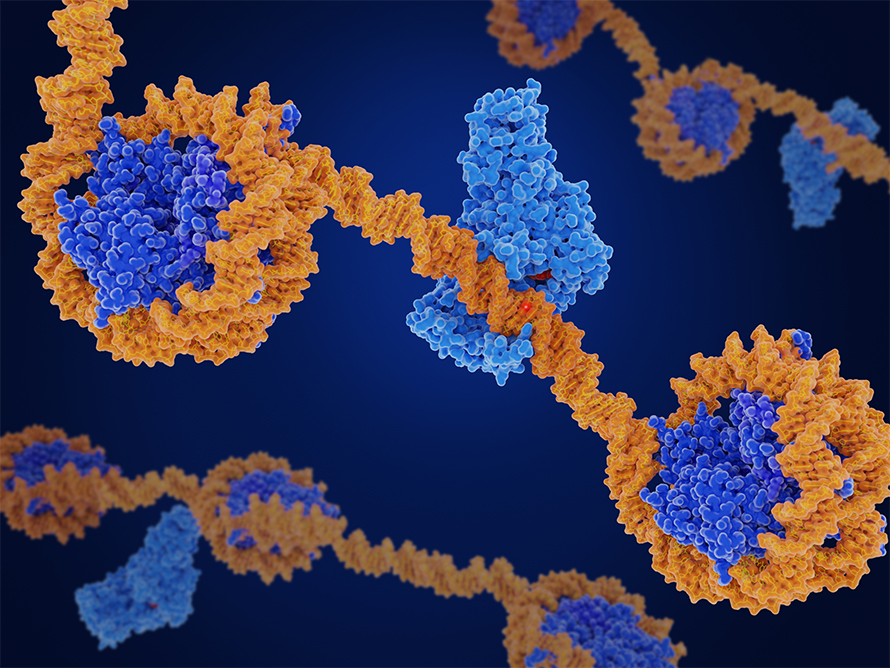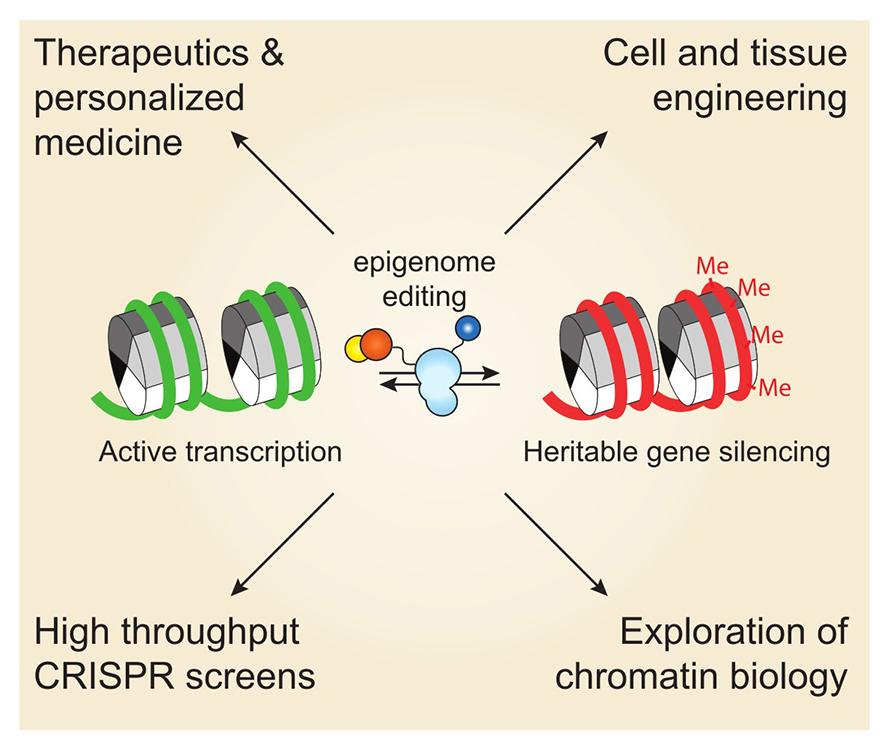CRISPR epigenome editor offers potential gene therapies
Epigenetics explores how behaviors and environmental factors can change gene expression without altering the DNA sequence. In a new study, presented at the American Society for Biochemistry and Molecular Biology 2025 Annual Meeting, researchers designed CRISPR-based tools to edit neuron epigenomes, focusing on DNA methylation. This breakthrough could advance personalized treatments for neurological disorders by accounting for both genetic and environmental factors.

Neuronal genomes can be modified by the addition of a methyl group, or mCH, which is critical for gene regulation. DNA methylation occurs not only in cytosine-guanine, or CpG sites, but also at other cytosine sites, known as CpH or non-CpG methylation. CpH methylation refers to methylation at cytosines that are followed by adenine, thymine or another cytosine. Both CpG and CpH methylation sites are important for brain development and function. When these methylation patterns are disrupted, they are linked to neurodevelopmental disorders like Rett Syndrome. However, scientists do not understand how epigenetic changes within these sites lead to disease.
Bernardo Moreno, an undergraduate in James Nuñez’s lab at the University of California, Berkeley, is using the genome editing system CRISPR and dCas9, a catalytically dead version of the Cas9 enzyme, to alter genomic loci in neurons without cutting DNA. The system uses guide RNAs to direct dCas9, DNA methyltransferase 3A, or DNM3TA, or ten-eleven translocation, or TET, to make precise epigenetic modifications at the site of interest. DNMT3A silences genes by adding a methyl group, while TET removes these marks to reactivate expression.
Depending on whether the researchers want to silence or reactivate a gene dictates which protein, DNM3TA or TET, they fuse to dCas9. The resulting preformed protein enables targeted and reversible control of gene activity by adding or removing methylation at specific sites.
Unlike DNA or RNA-based delivery systems, which may cause lasting off-target effects, protein-based delivery systems have a short half-life, making them safer. Delivering CRISPR epigenome editor proteins with virus-like particles, or VLPs, minimizes the risk of any unintended side effects.

“(W)e didn’t expect this to work in neurons, especially cultured neurons, because these are traditionally very hard for reagents to get into with non-viral delivery methods,” Nuñez, an assistant professor at UC Berkeley, said.
Neurons are less responsive to common delivery methods like electroporation and chemical transfection. By using VLPs to encapsulate the large protein payload, the team achieved efficient delivery, and their platform is the first to deliver CRISPR epigenome editors as proteins.
Moreno will present his work on rewiring DNA methylation in neurons derived from induced pluripotent stem cells, or iPSCs, at ASBMB 2025 on April 14 in Chicago.
One of the team’s targets includes tau, a protein that can form neurofibrillary tangles and cause Alzheimer’s disease. Their goal was to use the CRISPR–dCas9– DNMT3A to silence the gene that encodes tau. After delivering the epigenome editor to iPSCs-derived neurons, they observed significantly lower levels of tau at both days and 14 days after treatment.
In the future, the team plans to introduce mutations in the epigenetic editor to simulate neurodevelopmental disorders and their methylation dynamics. Their long-term goal is to apply the method in animal models and eventually in humans.
“The same strategy could be applied to knock down PCSK9 gene (which drives low-density lipoprotein production) in hepatocytes to reduce cholesterol,” Moreno added, pointing to broad therapeutic potential and an interest within the biotechnology industry in translating to epigenetic-based therapies.
“There are several companies that have started epigenetic editing, which is very exciting for our field,” Nuñez said. “And now there are mice and non-human primate models showing that these tools can go into a mammal and target disease-relevant genes without ever altering the DNA sequence. It is completely epigenetics — so it’s a very exciting time.”

Enjoy reading ASBMB Today?
Become a member to receive the print edition four times a year and the digital edition monthly.
Learn moreGet the latest from ASBMB Today
Enter your email address, and we’ll send you a weekly email with recent articles, interviews and more.
Latest in Science
Science highlights or most popular articles

The science of staying strong
Muscles power every movement, but they also tell the story of aging itself. Scientists are uncovering how strength fades, why some species resist it and what lifestyle and molecular clues could help preserve muscle health for life.

Bacteriophage protein could make queso fresco safer
Researchers characterized the structure and function of PlyP100, a bacteriophage protein that shows promise as a food-safe antimicrobial for preventing Listeria monocytogenes growth in fresh cheeses.

Building the blueprint to block HIV
Wesley Sundquist will present his work on the HIV capsid and revolutionary drug, Lenacapavir, at the ASBMB Annual Meeting, March 7–10, in Maryland.

Gut microbes hijack cancer pathway in high-fat diets
Researchers at the Feinstein Institutes for Medical Research found that a high-fat diet increases ammonia-producing bacteria in the gut microbiome of mice, which in turn disrupts TGF-β signaling and promotes colorectal cancer.

Mapping fentanyl’s cellular footprint
Using a new imaging method, researchers at State University of New York at Buffalo traced fentanyl’s effects inside brain immune cells, revealing how the drug alters lipid droplets, pointing to new paths for addiction diagnostics.

Designing life’s building blocks with AI
Tanja Kortemme, a professor at the University of California, San Francisco, will discuss her research using computational biology to engineer proteins at the 2026 ASBMB Annual Meeting.

